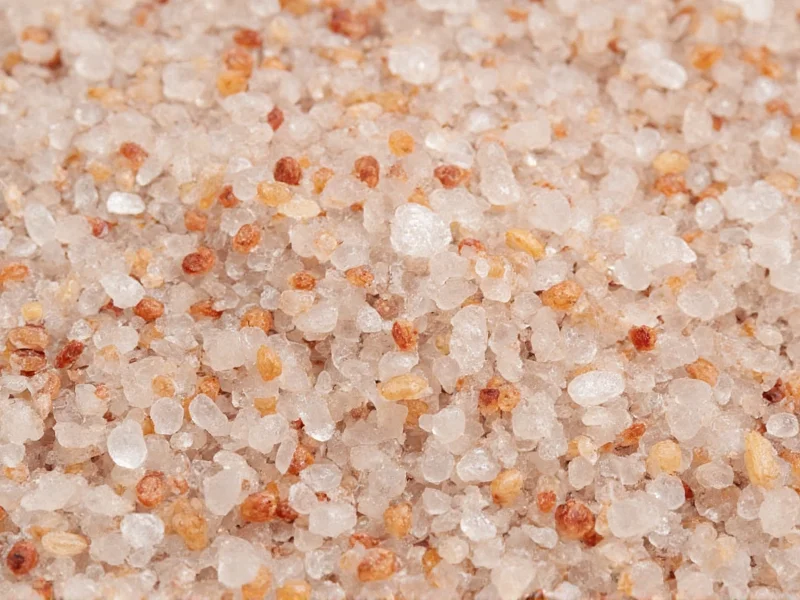Reducing sodium intake is crucial for millions managing hypertension, heart disease, or kidney conditions. While eliminating salt entirely requires careful planning, numerous evidence-based alternatives exist that maintain flavor without compromising health. Understanding which substitutes work best for specific culinary applications and health situations separates effective sodium reduction from disappointing dietary experiments.
Why Seek No Salt Alternatives?
The average American consumes 3,400 mg of sodium daily—nearly 50% more than the American Heart Association's recommended limit of 2,300 mg, with an ideal target of 1,500 mg for most adults. Excessive sodium contributes to high blood pressure, a leading risk factor for heart disease and stroke. For those with specific health conditions, finding reliable no sodium seasoning alternatives isn't just preferable—it's medically necessary.
However, completely removing salt requires understanding its dual role: enhancing flavor and serving as an essential electrolyte. The goal isn't elimination of sodium (which our bodies require in small amounts) but strategic reduction through smarter alternatives that deliver taste satisfaction with less sodium impact.
Evidence-Based No Salt Alternatives
Not all salt substitutes deliver equal results or health benefits. The following options represent the most effective sodium-free seasoning alternatives backed by nutritional research and culinary testing.
Potassium Chloride Blends
Potassium chloride provides the closest approximation to salt's flavor profile while offering cardiovascular benefits. Unlike sodium which raises blood pressure, potassium helps lower it. Major brands like NoSalt and Morton Salt Substitute use potassium chloride as their primary ingredient.
Important consideration: Those with kidney disease or taking certain medications (like ACE inhibitors) should consult their physician before using potassium-based alternatives, as excess potassium can be dangerous for these populations.
Herb and Spice Combinations
Creating custom herb blends provides complex flavors without sodium. Effective combinations include:
- Mediterranean blend: Rosemary, thyme, oregano, garlic powder
- Southwest kick: Cumin, smoked paprika, chili powder, onion powder
- Herbes de Provence: Tarragon, marjoram, savory, fennel seeds
These healthy salt replacements for hypertension work by stimulating different taste receptors, creating perceived saltiness through aromatic compounds rather than sodium ions.
Citrus and Acidic Enhancers
Lemon, lime, and vinegar (apple cider, balsamic, rice wine) provide brightness that mimics salt's flavor-enhancing properties. A squeeze of citrus added at the end of cooking can transform dishes without adding sodium. Try these applications:
- Sprinkle lemon zest over roasted vegetables
- Add rice vinegar to stir-fries instead of soy sauce
- Use lime juice in place of salt in guacamole
Umami Powerhouses
Foods rich in glutamates create savory depth that reduces the perceived need for salt:
- Nutritional yeast (especially for dairy-free "cheesy" flavors)
- Mushroom powder (dried porcini mushrooms ground fine)
- Tomato paste (concentrated umami source)
- Seaweed flakes (kombu, nori)
| Alternative | Sodium Content | Best Culinary Uses | Key Health Consideration |
|---|---|---|---|
| Potassium chloride blends | 0 mg sodium | General seasoning, soups, sauces | Caution for kidney disease patients |
| Herb and spice blends | 0 mg sodium | Meats, vegetables, marinades | Generally safe for all populations |
| Citrus juices/vinegars | 0 mg sodium | Salads, fish, finishing dishes | Acidic nature may affect some medications |
| Umami ingredients | Varies (typically low) | Stews, sauces, vegetarian dishes | Check labels for hidden sodium |
| Himalayan pink salt | Approx. 1,600 mg per ¼ tsp | Finishing dishes | Still high in sodium—use sparingly |
Implementing No Salt Alternatives Successfully
Transitioning to low-sodium cooking requires more than simple ingredient substitution. Your taste buds adapt to salt levels over time, so a strategic approach yields better long-term results.
The Gradual Reduction Method
Instead of eliminating salt immediately, reduce by 25% initially, then another 25% after two weeks. This allows your palate to adjust while incorporating alternatives. Within 6-8 weeks, foods that previously seemed perfectly seasoned will taste overly salty.
Culinary Techniques That Enhance Natural Flavors
Certain cooking methods maximize inherent flavors, reducing reliance on added seasonings:
- Dry roasting spices before use intensifies their flavor compounds
- Caramelizing vegetables creates natural sweetness that balances savory elements
- Layering flavors throughout cooking rather than just at the end
- Using high-quality ingredients with superior natural flavor profiles
Common Misconceptions About Salt Alternatives
Navigating the world of sodium-free seasoning alternatives requires separating fact from marketing claims:
- "Sodium-free" doesn't always mean healthy: Some alternatives contain high levels of potassium which can be problematic for certain medical conditions.
- Sea salt isn't lower in sodium: All salt forms (sea salt, table salt, Himalayan pink salt) contain approximately 40% sodium by weight.
- "Low-sodium" products still contain significant sodium: Many contain 140mg or more per serving—check labels carefully when following strict low-sodium diets.
When to Consult a Professional
For individuals managing specific health conditions like chronic kidney disease, heart failure, or on certain medications, working with a registered dietitian ensures your no salt alternative strategy aligns with your medical needs. They can provide personalized guidance on appropriate sodium targets and safe alternatives based on your complete health profile.











 浙公网安备
33010002000092号
浙公网安备
33010002000092号 浙B2-20120091-4
浙B2-20120091-4